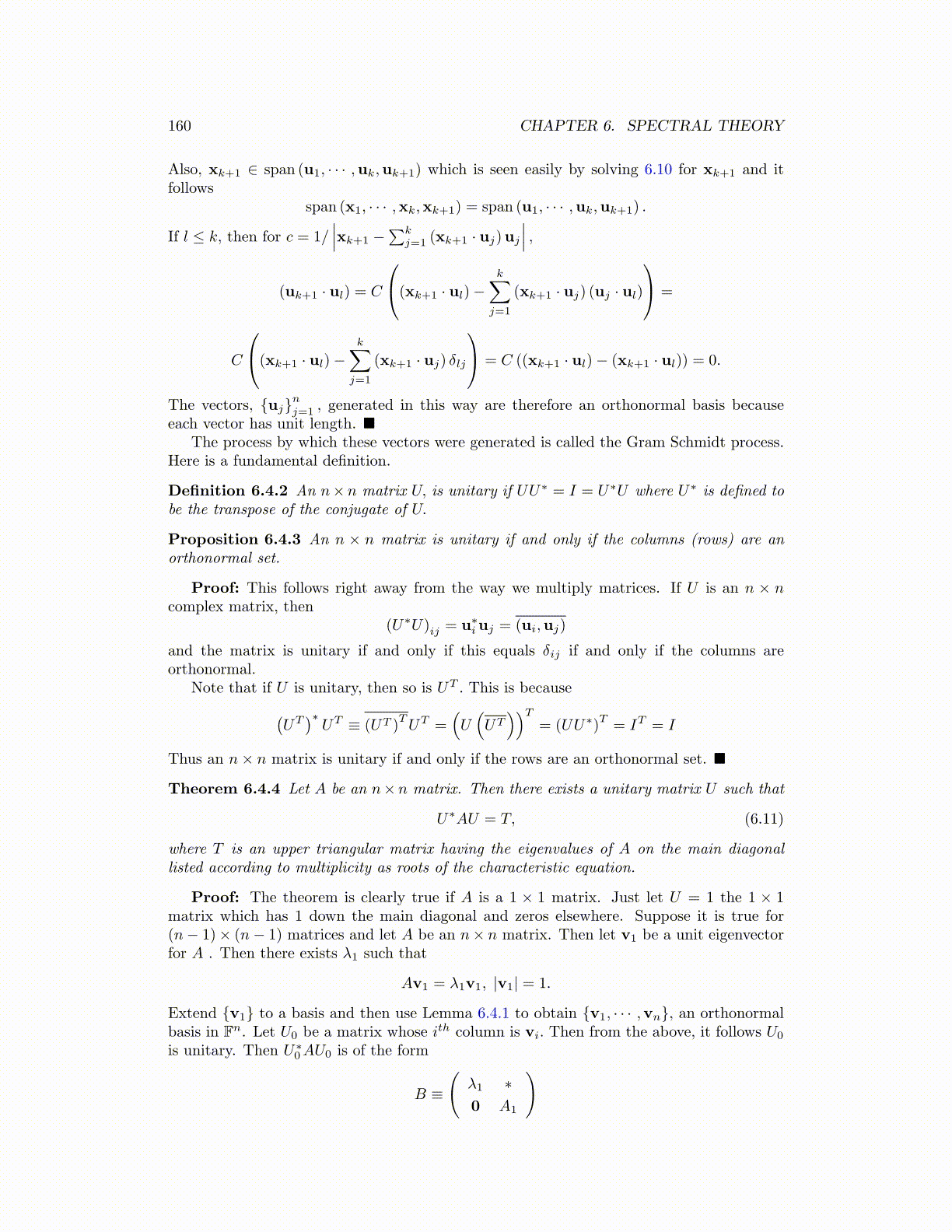
160 CHAPTER 6. SPECTRAL THEORY
Also, xk+1 ∈ span (u1, · · · ,uk,uk+1) which is seen easily by solving 6.10 for xk+1 and itfollows
span (x1, · · · ,xk,xk+1) = span (u1, · · · ,uk,uk+1) .
If l ≤ k, then for c = 1/∣∣∣xk+1 −
∑kj=1 (xk+1 · uj)uj
∣∣∣ ,(uk+1 · ul) = C
(xk+1 · ul)−k∑
j=1
(xk+1 · uj) (uj · ul)
=
C
(xk+1 · ul)−k∑
j=1
(xk+1 · uj) δlj
= C ((xk+1 · ul)− (xk+1 · ul)) = 0.
The vectors, {uj}nj=1 , generated in this way are therefore an orthonormal basis becauseeach vector has unit length. ■
The process by which these vectors were generated is called the Gram Schmidt process.Here is a fundamental definition.
Definition 6.4.2 An n×n matrix U, is unitary if UU∗ = I = U∗U where U∗ is defined tobe the transpose of the conjugate of U.
Proposition 6.4.3 An n × n matrix is unitary if and only if the columns (rows) are anorthonormal set.
Proof: This follows right away from the way we multiply matrices. If U is an n × ncomplex matrix, then
(U∗U)ij = u∗iuj = (ui,uj)
and the matrix is unitary if and only if this equals δij if and only if the columns areorthonormal.
Note that if U is unitary, then so is UT . This is because(UT)∗UT ≡ (UT )
TUT =
(U(UT))T
= (UU∗)T= IT = I
Thus an n× n matrix is unitary if and only if the rows are an orthonormal set. ■
Theorem 6.4.4 Let A be an n×n matrix. Then there exists a unitary matrix U such that
U∗AU = T, (6.11)
where T is an upper triangular matrix having the eigenvalues of A on the main diagonallisted according to multiplicity as roots of the characteristic equation.
Proof: The theorem is clearly true if A is a 1 × 1 matrix. Just let U = 1 the 1 × 1matrix which has 1 down the main diagonal and zeros elsewhere. Suppose it is true for(n− 1)× (n− 1) matrices and let A be an n× n matrix. Then let v1 be a unit eigenvectorfor A . Then there exists λ1 such that
Av1 = λ1v1, |v1| = 1.
Extend {v1} to a basis and then use Lemma 6.4.1 to obtain {v1, · · · ,vn}, an orthonormalbasis in Fn. Let U0 be a matrix whose ith column is vi. Then from the above, it follows U0
is unitary. Then U∗0AU0 is of the form
B ≡
(λ1 ∗0 A1
)